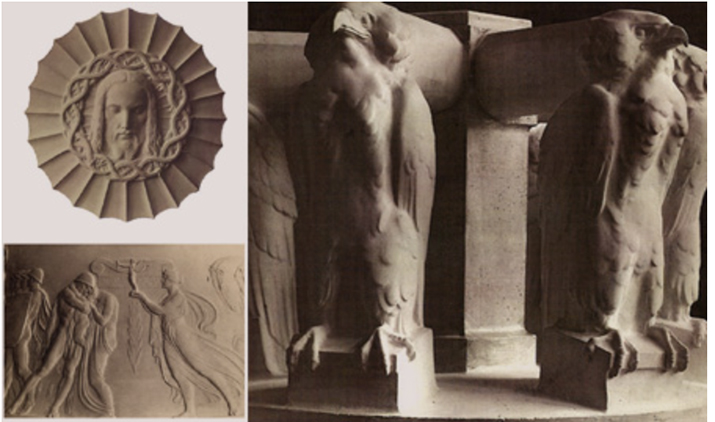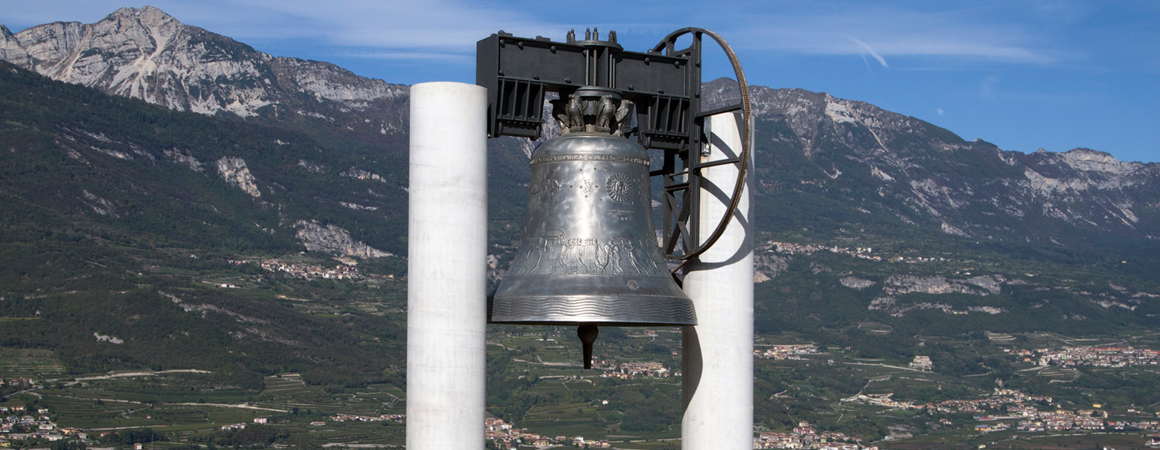FOR WHOM THE BELL TOLLS - P4
Projects almost always seem obvious once they have come to fruition. But there are many variables to consider when you embark on an undertaking that has no precedents with which to refer to. For example, it must be taken into account that a bell while swinging may cause damage. Serious even. It could for example cause a tower to collapse. For this reason, between September and October 1924 engineers and technicians went to the Malipiero bastion several times to verify the Bell’s stability. At the end of the investigations, it turned out to be a suitable place for the installation of «the monumental Bell of the Fallen, both because it is in an eminently elevated and central position in the city and for its robust construction». But something had to be done: «the oscillation of the bell requires the strengthening of the upper slab of the tower in the form of a circular ring of reinforced concrete», the experts decreed.
While the technicians were doing their work, however, Don Rossaro was thinking of something else and had already signed the contract for the fusing of the bell with the «Luigi Colbacchini e Figli» company of Trento. But that still wasn't enough. There was a need to think about embellishment and a word, a phrase, a motto. In short, something that explained exactly what the meaning of the operation was.
The Trentino artist Stefano Zuech was summoned and proposed an elaborate series of symbolic bas-reliefs. The meaning of those figures had to reflect Don Rossaro's thoughts regarding the war: a mixture of heroism and reflection on the mystery of death.
At the centre of the bell the face of Ecce Homo was placed, further down the departure of the soldier, the instruments of war and then death with the funeral procession of weeping women. Finally, the victory announced by blaring trumpets, soldiers on horseback and by a young woman carrying peace, in the form of the Winged Victory of Samothrace, placed on the altar where the dates 1914-1918 are engraved. Conflicts are evoked in their rawness. This is why the soldiers in the last scene are portrayed without military uniform, naked. They're just men. It doesn't matter which nation they come from, the ideals for which they fight, the actions that made them heroes or cowards. They are just men, naked because the war takes away everything.
But Don Rossaro was also thinking of an inscription that could give an unambiguous meaning to the entire work. He himself recounts this in his diaries.
He particularly remembers the moment of inspiration, which came to him while he was accompanying «an old Veronese lady» among the cemeteries of Monte Zugna in search of the tomb of her son. It was while wandering among the tombs that for the first time he thought of death as a long sleep in darkness, illuminated however by the light of Christ. «The Bell – wrote Don Rossaro – will sing, taming all the peoples under its maternal caress, fusing them into one heart, just as one day it felt the ferocious cannons of all the nations melting in its bosom». It was this intertwining of feelings, on the one hand the homeland, on the other the universal Christian vision, that pushed the priest to compose the Latin couplets that were chiselled on the back of the Bell: Dormite in umbra noctis, laetamini in lumine Christi. Dum aere jungo populos, et vestras laudes celebro (Sleep in the shadow of the night, rejoice in the light of Christ, while with bronze I unite the people and celebrate your glory).

Bell embellishment






